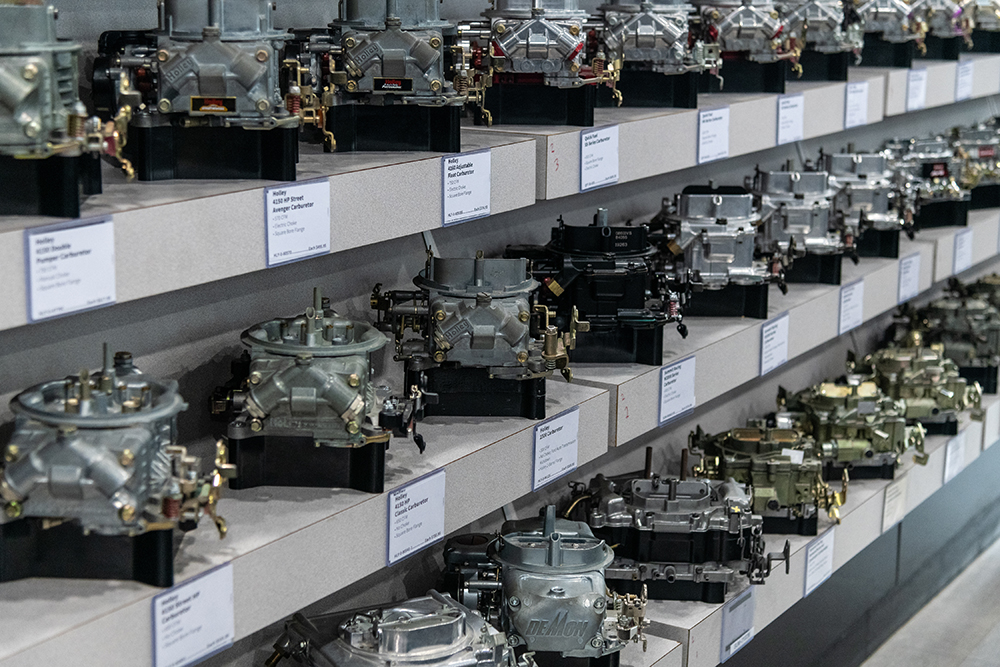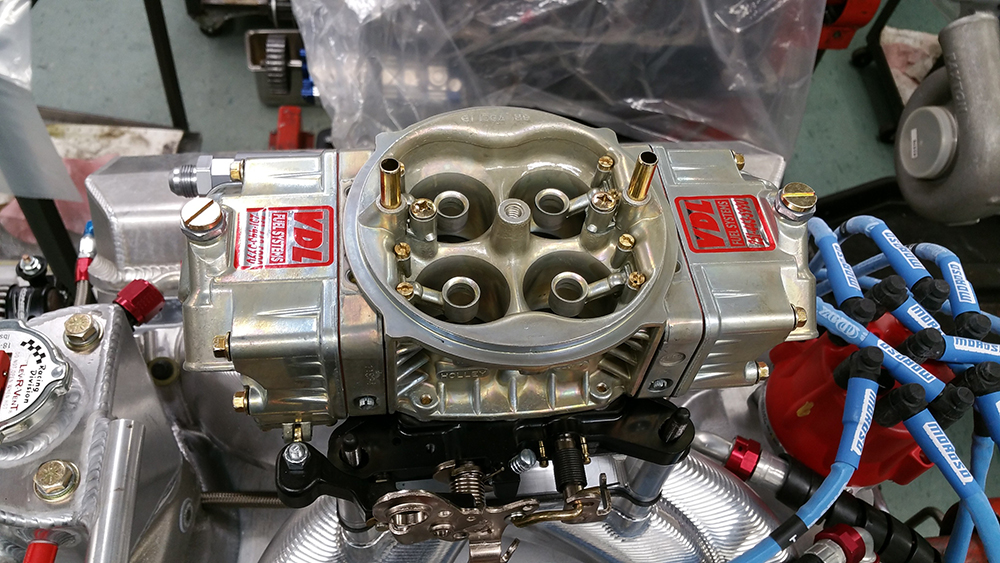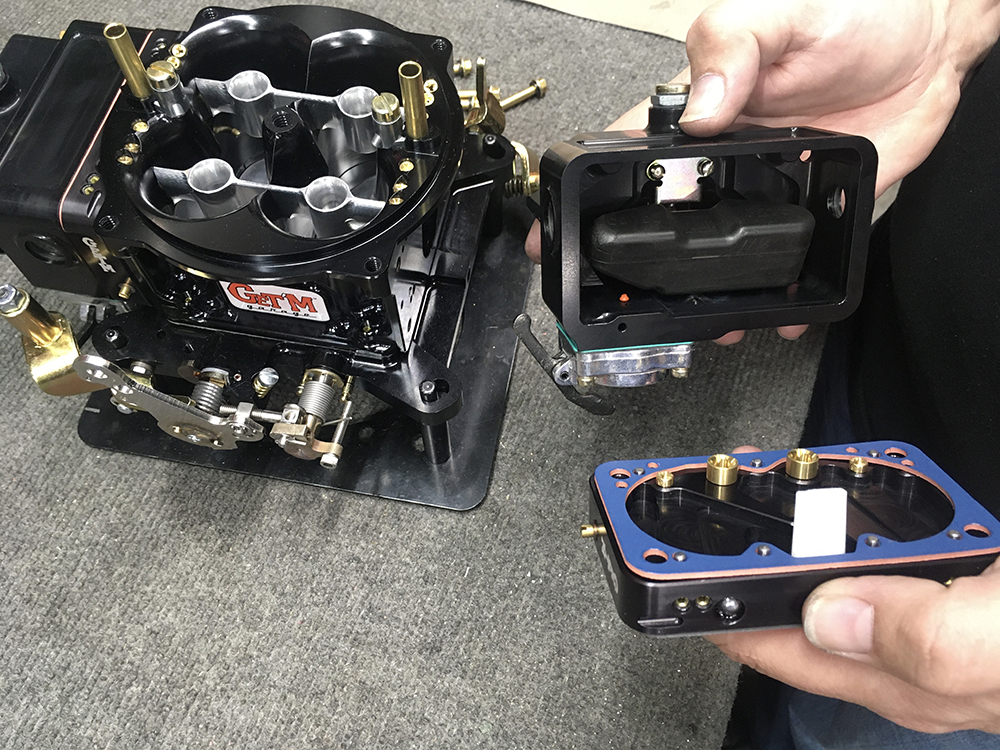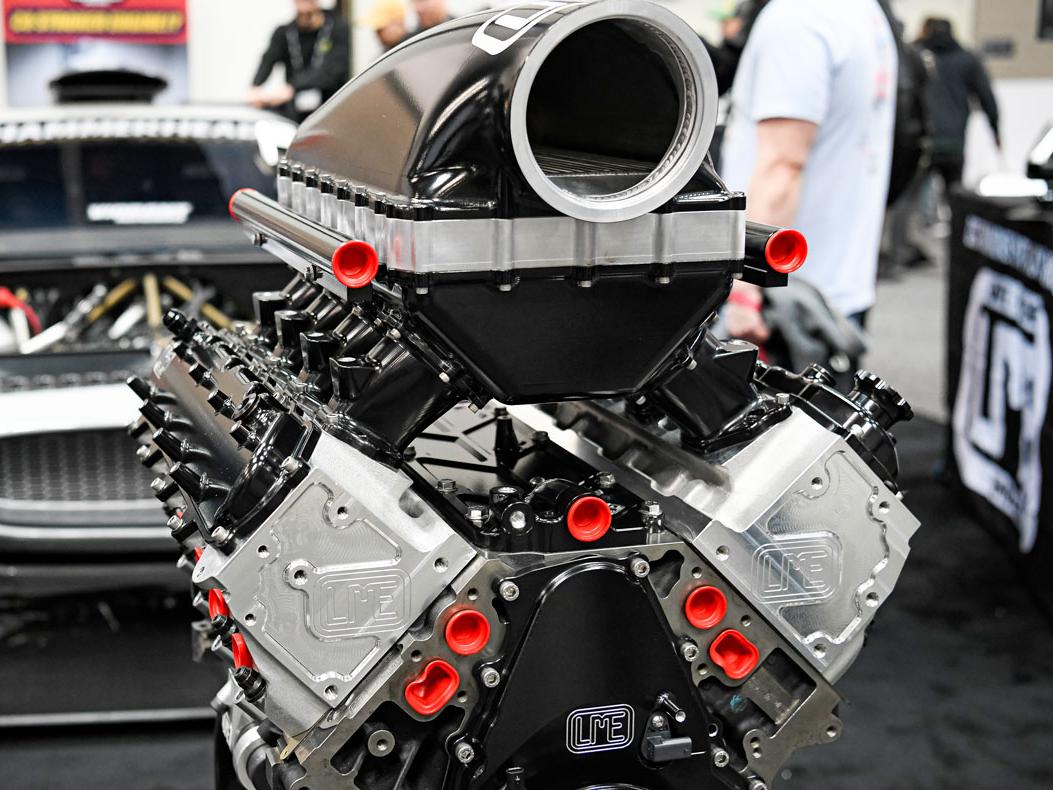CARBURETORS: A RENAISSANCE STORY
Today’s carbs have come a long way from yesterday’s ‘calibrated gas leakers,’ resulting in a rebirth for these core engine components.
Even though it was invented more than 100 years ago, the carburetor is currently undergoing a revival of sorts. Consider Holley Performance Products: While its current new-product development is focused primarily on EFI systems, the Bowling Green, Kentucky-based company still produces on the order of 600 carbs per day, according to Holley’s Laura Shehan.
Joe Hilerio of BLP Racing Products in Orlando, Florida, told us his company has seen “steady growth” for the past five years, with 2020 being “the best year yet, despite COVID.”
Dan VanderLey said VDL Fuel Systems in Mooresville, North Carolina, also enjoyed record sales last summer, the pandemic notwithstanding. “Year-to-date we’re even with last year, and last year was a very good year,” he said in October 2020.
What’s fueling (pun intended) this demand? The reasons vary from rulebooks to checkbooks, but a lot of it has to do with a carburetor’s relative simplicity.
“A carburetor is a really simple mechanical device that works in conjunction with immutable physical laws that have been in place since the beginning of time,” said Dave Braswell of Braswell Carburetion, Tucson, Arizona.

That mechanical simplicity has convinced some racers to give up their EFI systems. As Trevor Wiggins of Get ’M Garage in Alvaton, Kentucky, put it, “Racers want to race. They don’t always want to tune. I was an EFI guy through and through, but I found myself tuning more than I was able to go race. My customers were the same way. They’d call me and say, ‘Can you just get me a carburetor? I know I’m going to get to race if I go carbureted.’ There’s nothing wrong with fuel injection. I’m a big fan and play with it quite a bit. But carbs are here to stay for racers who just want to go race.”
Because a carburetor is mechanical and not electrical, Hilerio noted, “if something goes down at the track it’s a lot easier to find a float, or a needle and seat, or a squirter, or whatever you need to repair your carburetor than it is to find some sort of sensor or even determine what the issue is on your injector unit.”
Cost is a factor, too, he added. “The carburetor is still a lot less expensive [than EFI] in the long term. By the time you get your injection, your different fuel pump, in some cases a different tank, all the different sensors and so forth, you have a $10,000 endeavor, compared to a $1,000 carburetor,” said Hilerio.
“Carburetors, time and again, have been proven to make more power than EFI systems,” said Jeff Harris of AED Performance, Richmond, Virginia. “If it’s all about raw power, the carburetor is still the way to go.”
MARKET GROWTH
For many of these companies, the growth of dirt track racing, and crate engine classes in particular, have spurred demand for carburetors.
“Circle track and dirt are the main types of carburetors we sell,” said VanderLey. “We have a good spread of everything from the 500-cfm two-barrel to custom big-bore carburetors for the big block dirt modifieds in the Northeast and the dirt late models that make 850 and 900 horsepower.”

VanderLey said crate engine racing “has been our biggest growth area, not so much because we’ve brought in more or new racers as much as it is the rules changed. A class that previously was running what we’d call a rules engine, that rule has changed to a crate engine. The carburetor rule changed along with it, therefore there was a new market.”
Crate motor carburetors have been Braswell Carburetion’s “biggest growth area. Because of that, we concentrated our development work on them for the last two to three years,” Braswell said. “We now have five carburetors for the 602 and 604 motors. They are specifically sized and calibrated for gasoline/110, CHP, E85, ethanol, and methanol.”
AED, too, has seen gains in its dirt oval business. “The super late model stuff is always fun to build because it’s kind of wide open—no rules, big power,” Harris said. “But the crate stuff, when you get something that’s power limited, any improvement over that is just amplified. If something makes 800 horsepower, an extra 5 or 10 horsepower is good, but it’s not a make-or-break thing. If something makes 350 horses, an extra 10 is a big deal, especially when everybody else has to run the same engine technology.”
At BLP, “our biggest sellers are our billet Dominators,” said Hilerio. “In circle track, our 600 billet is a big seller for the crate motor applications; and our BX45, a 4500-designed billet Dominator, seems to be the biggest ticket in the drag race market. I think our biggest growth has been in the drag race market, with the advent of the no-prep races, grudge races, even some of the bracket races.”
“Large-horsepower, big-cubic-inch, single- and dual-carb setups are in high demand, including blow-through carburetors and grudge race/nitrous combinations, what we like to call our maximum horsepower seekers,” said Wiggins. “Horsepower, technology, and cubic inches seem to increase each year, and everyone is looking for that best quality advantage.”
MISCONCEPTIONS
Despite—or maybe because of—the carburetor’s long history with performance engines, there are still knowledge gaps in terms of how to effectively use them.
“One of the biggest problems I’ve found is that people are trying to do things with carburetors the same way they were doing them 50 to 60 years ago,” Braswell said. “In the last 20 to 30 years, carburetors have evolved so much. Motors and carburetors are totally different now. Back in the 1960s, if you turned 6,000 rpm with a motor you were in the Twilight Zone. Now, with most motors, 6,000 is below peak torque. Just because they’re pushrod/overhead valve motors doesn’t mean anything is even close to the same. Carburetors are highly developed now to match the requirements of modern racing engines.”
“Engine builders are pretty knowledgeable and have a good idea of what they’re trying to accomplish,” Hilerio said. In his experience, problems with carburetors can arise with the end user. “It’s the people who maybe just bought a car and are learning about it. They don’t know how to determine where the issue is. Obviously, the carburetor is the first thing they can see, the first thing they can touch, and usually it gets 90 percent of the blame.”
Shehan agreed. “I’ve seen many a situation where the carburetor is blamed and often subsequently replaced due to poor performance,” she said. “However, swapping a carburetor will not cure a vacuum leak or issues with ignition and/or timing, and may only band-aid the problem.”
Critical to carburetor performance is proper fuel pressure, Shehan added. “Having a gauge near your carburetor is priceless. Fluctuations in pressure, or pressures that are too high or too low, will seriously impact carburetor—and engine, and vehicle—performance.”
“I’ve said it so many times it’ll probably be on my tombstone: ‘What’s your fuel pressure?’” VanderLey said. “Fuel pressure is the lifeblood of the carburetor. It means everything. If I know [fuel pressure] is okay, then I know the fuel system is working correctly and that the carburetor is going to react correctly.”
SUCCESSFUL SIZING
“Carburetor sizing is the most common thing people get wrong,” claimed Harris. “Bigger is not always better. And the engine itself is only part of the equation when considering what size carburetor would be best for each customer.”

As an example, Harris described building “two mirror-image engines, exactly alike in every way. You put one of them in a 6,500-pound, four-wheel-drive truck that you’re going to street drive, and you put the other in an 1,800-pound dragster with a trans brake. The carburetors for those engines will be completely different. In that big truck, it doesn’t matter how much power it makes at 6,500 rpm if you accelerate the thing from 800 leaving a stoplight. With a trans brake dragster, it doesn’t matter how it drives at 1,000 rpm. It needs to accelerate from 5,000 to 7,000, hit the next gear and do the same thing. Given those two scenarios, those two carburetors are completely different pieces. They’re machined differently, they’re sized differently, and they’re tuned differently, even though the engines were exactly the same.”
To Harris, “getting the throttle bore to venturi ratio and getting the right booster selection are critical to making a car accelerate.” And acceleration is the “key to success. Whether it’s 60-foot times in a drag race setup or restarts or off-corner speed in an oval track or road race setup. Getting this thing to pick up speed and accelerate is where the technology in the carburetors will shine. Acceleration can be the difference between a win or a second-place finish.”
When most people discuss carburetor size, the measurement usually cited is cfm. Braswell instead sizes his carburetors by venturi diameter and throttle bore diameter. “I go off absolute dimensions,” he said. “If you need a carburetor that flows more, then we adjust the size of the venturi and the throttle bore when possible.”
Still, Braswell does build carburetors that comply with rulebooks that specify their size by cfm. “There are a lot of sanctioning bodies that mandate 750 cfm, so we have a carburetor we call a Spec 750. It fits all of the 750-cfm gauges, but I’d be embarrassed if it didn’t flow well over 800 cfm.”

Size also comes into play when customers are chasing a big dyno number, Hilerio said. “We’ve seen them going too big with the carburetor, then they go too big with the whole combo—large intake, large cams, large heads—and now everything seems sluggish. They don’t have any velocity built into their program. They are looking for a dyno number at peak torque or horsepower as opposed to what’s under the curve.”
“Ultimately, the carburetor reacts to what the engine does to the booster signal, to the vacuum,” VanderLey said. “It’s dependent on all that stuff: cam design, intake manifold, timing, fuel, fuel pressure—all of that is what’s going to make the carb happy or not happy.”
Yet there is another side to the size coin, Wiggins pointed out. “A single-carbureted big block Chevrolet today can make 1,300 to 1,500 horsepower. You can’t put a small carburetor on that. It needs a lot of air. If you put a 1,200- or 1,250-cfm type of carburetor on that type of motor, you’re basically restrictor-plating that motor. You have to match the cfm to the engine application and the horsepower.”
And to the fuel. “There are a lot of different things we would do to a carburetor depending on the fuel the customer was using to make sure they’re getting optimal performance,” said Hilerio. “For instance, if a guy is running C16 versus Q16, our main wells would be a little larger, our main well outlets would be a little larger, our booster holes would be larger, as would our booster feed. Yes, they could jet it down if they decide to run C16 at a different race. Is it going to run optimal? Not according to us and the performance quality we want.”
For those who want to switch between gas and alcohol, “I would caution that converting a carburetor to methanol or E85 isn’t merely a metering block change,” said Shehan. “The entire fuel delivery circuit should be properly sized and tuned to not only deliver the proper amount of fuel, but to also discharge it in a manner that atomizes appropriately for peak performance.”
CUSTOM UNITS
The sophistication of today’s manufacturing equipment gives carburetor manufacturers freedom to design and build truly custom carburetors for each individual engine.
“With the technology available with CNC machines now, we have so much more control over the end product that we build,” Harris said. “We’re able to basically start from scratch and build however we want. Not just larger throttle bores but venturi size, the shape of the venturi, the bore centers between the butterflies themselves—all that stuff is up for grabs. And that’s only half of the equation. We also have the capabilities of making better and better metering blocks. As the carburetor gets bigger and needs to flow more air, metering blocks and the technology for those must follow suit. You’re still always chasing an air/fuel ratio. If one side of the equation gets bigger, the other side has to follow.”
Even a large-scale manufacturer like Holley has used CNC machining for “custom porting opportunities in the main body,” said Shehan, “both in the initial air entry as well as in the transition through the venturi of the carburetor, like in the Gen III Dominators. And while all our carburetor castings are CNC machined, CNC capabilities have also allowed quick changes in the design and development of the billet metering blocks for custom racing applications as well as various fuel blends.”
“The engineering level today is unbelievable compared to 30 years ago, even 10 years ago,” Wiggins said. “3D printing has also changed how we machine and test things. We can design a part, 3D print it, make any adjustments, and perfect it before ever moving to the CNC machine. Whatever you can imagine, you can build.”
 MEMBERSHIP LOGIN
MEMBERSHIP LOGIN JOIN PRI
JOIN PRI


